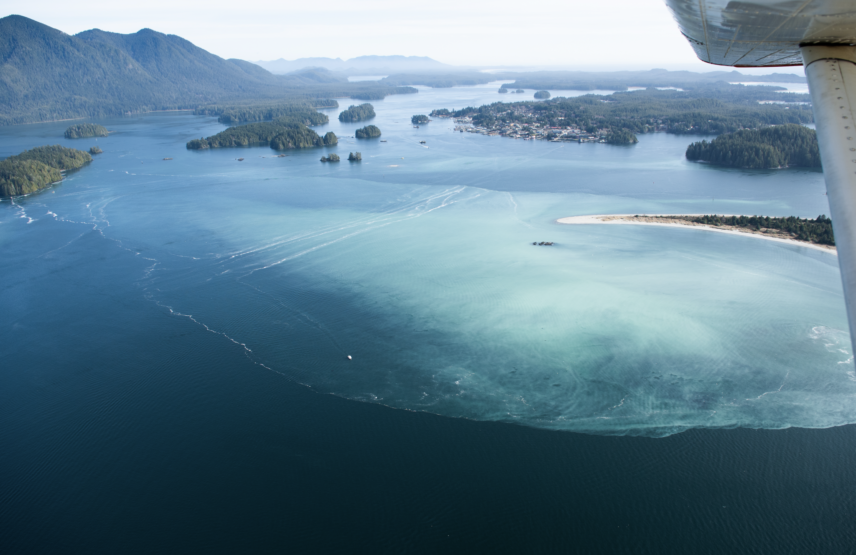Did you know some of the richest spawning grounds for Pacific herring between California and Alaska fall smack dab in our waters? Herring play an important role as the preeminent forage fish for the North Pacific coast and are a key indicator to the health of Pacific salmon and other species—like orcas, humpbacks, and a whole host of seabird species—that love to eat them.
When they do come, the rest of the wild seems to come with them. Birds somehow multiply by a magnitude. Whales show up en masse, lolling around the milt-tinged, milky blue water, happily swallowing the oily, calorie-rich fish with ease. Even the wolves take advantage of the eggs stuck to kelp and trees on the shoreline. It’s a nature party, and everyone is invited.
The invite is an important one. As a link in the coastal ecosystem, herring transfer energy from the plankton they eat to the larger iconic animals—among them the sacred salmon that make up the “backbone of the coast.” Most notably, herring comprise most of the Chinook salmon’s diet. In studies by Fisheries and Oceans Canada, the partially digested remains of identifiable herring comprised more than 60% of Chinook stomach contents by weight. Cod, halibut, Coho and lingcod all show similar diets, comprising approximately 40-75% herring.
In short, every hungry stomach in the Salish Sea and along the true west coast relies on herring, so that makes them pretty important, and especially key for the sport fishermen that love Tofino and the rest of the B.C. coast.
While they are on their way out, back out into the migration routes they follow the rest of the year, Tofino was happy to have herring as a guest. Maybe next year you make the trip too, and we will introduce you to the big little fish that feeds Tofino’s locals.

And a Little Fish Sidebar on Big Conservation Questions
(because we ain’t afraid to get political when it comes to conserving the wild we love)
Should B.C.’s herring fishery take a break? It’s not as crazy of an idea as people may think. A four-year west coast-wide herring fisheries closure was instituted by the Canadian Federal government from 1968-1971, and it allowed herring to recover, relatively speaking. Japanese fisheries have let their own overfished herring stocks recover multiple times via full shutdowns of the fishery. The DFO says herring stocks can withstand a 20 percent harvest of the Strait of Georgia biomass. Critics point out federal fisheries managers greenlighted East Coast cod harvest right up until they crashed.
In the late 70s, Japan was paying $5000 a ton for herring. According to the BC Ministry of Agriculture, it’s now around $840 per ton. Almost all B.C. herring roe goes to a dwindling luxury food market in Japan, which explains the steep drop in price. The rest goes into your dog’s dinner dish, your mom’s garden fertilizer, or into the mouths of open-net pen Atlantic salmon farms, undermining the West Coast’s wild salmon supply. Meanwhile, the tasty fish that people (and endangered Southern Resident orcas) truly want to eat—like salmon, halibut and lingcod—go hungry. It may be time to ask ourselves where herring serve us best: in the water providing forage, or being harvested and served up in a way that will only starve wild fish populations.

